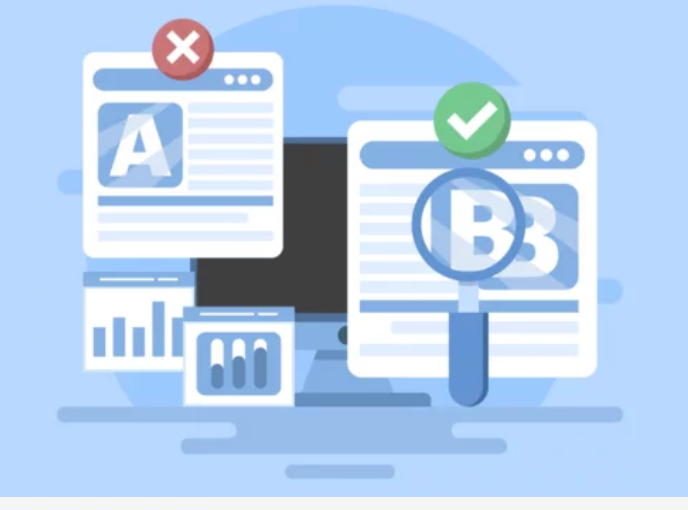A/B Testing in Email Marketing: What You Should Test and Why
Want to boost traffic and drive sales with email marketing? One of the simplest ways to get there is by improving your open and click-through rates. But how do you make those numbers rise?

Want to boost traffic and drive sales with email marketing?
One of the simplest ways to get there is by improving your open and click-through rates. But how do you make those numbers rise?
Well, there's this A/B testing—an easy, data-driven way to see what resonates with your audience.
Think of it like baking the perfect cookie. You try different recipes, tweak ingredients, and test techniques to see what works best.
In email marketing, A/B testing lets you do just that—experiment with subject lines, images, or call-to-action buttons to find the "secret sauce" that grabs your readers' attention.
Even in the age of social media, email remains a powerhouse with over 3.9 billion users worldwide.
The real challenge?
Crafting campaigns that stand out in crowded inboxes. With A/B testing, you can identify exactly what appeals to your audience and keep refining until you’ve got the perfect email formula.
In this article we will dive into how A/B testing can level up your email marketing strategy.
What is A/B testing?
A/B testing, or split testing, is a straightforward yet powerful way to improve email marketing results.
It involves creating two versions of an email—each with a different element, like the subject line, call-to-action (CTA), design, or even the send time—and sending them to different segments of your audience to see which performs better.
The idea is actually simple: you’re testing which version gets more opens, clicks, or conversions by comparing metrics on both.
But like fine-tuning a recipe, A/B testing is more than just mixing ingredients and hoping for the best. By comparing how each version performs, you can pinpoint what makes readers respond, allowing you to adjust your emails for maximum impact.
Some tests are more involved, with multiple versions (A/B/N testing) to get even deeper insights into what resonates with your audience.
With this approach, you’re not only improving engagement but also continuously refining the customer experience to make each email more effective.

Why does it matter?
A/B testing works best when it’s done continuously, giving you an ongoing source of insights to improve your strategy over time.
With each test, you gain a clearer understanding of what your audience responds to, allowing you to make smart tweaks that keep your content relevant and effective. Here are some of A/B testing perks:
- Unlimited Flexibility
You can test almost anything—from emails and ads to web pages and app features. This flexibility means you can adapt your campaigns to stay aligned with digital trends and get the best results from each piece of content. - Reveals What Clicks with Your Audience
A/B testing shows you exactly which elements of your campaigns hit the mark. By zeroing in on what resonates, you make informed changes that boost engagement and avoid wasting time on ideas that don’t connect. - Data Over Guesswork
No more guessing games. With A/B testing, you get real numbers to back your decisions. Measuring responses to different versions helps improve key metrics like open rates, clicks, and conversions. - Deepens Understanding of Your Audience
Each test is a chance to learn something new about your audience’s preferences. This builds up a profile of what works, helping you craft messages that connect more effectively over time.
When to Use A/B Testing?
By testing different elements, you can pinpoint what’s holding back engagement and turn underperforming assets into winners.
It’s also ideal for new initiatives—like a web page or email launch—when you’re unsure of the most effective approach.
Running an A/B test lets you directly compare options to find out which strategy resonates best.

A Few Key Things to Check Before You Test
- Choosing the Right Variables
Start by focusing on a few key elements rather than testing everything at once. Begin with the basics:- Define Your Goals: Are you aiming for higher open rates, more clicks, or more conversions? Your objectives will guide which elements to test.
- Prioritise Impactful Changes: Consider which tweaks are likely to make a big difference. For instance, subject lines often affect open rates, while CTA buttons drive clicks.
- Check Past Performance: Look at what’s worked in past campaigns to identify areas that could use improvement.
- Keep It Simple: Start with one or two variables, like subject lines or sender names, then test more complex combinations as you go.
- Sample Size
The accuracy of your test results depends on getting the sample size right:- Aim for Enough Recipients: Make sure each test group is big enough to provide reliable data. Online sample size calculators can help based on your list size and confidence level.
- Balance Your Groups: Split your audience evenly between the versions for a fair comparison. For lists over 1,000, you might follow the 80/20 rule, testing with 20% and then rolling out the winner to the rest.
- Stay Consistent: Use a stable sample size across tests to get reliable results.
- Analysing Results
After your test, dive into the metrics to see what worked:- Track key metrics: Focus on metrics tied to your original goals, like open rates, clicks, or conversions.
- Confirm Statistical Significance: Check if the difference between versions is statistically significant; online tools can help if you’re unsure.
- Iterate and Improve: Use insights from each test to refine future campaigns, building on what you’ve learned for continued growth.
Top 3 Email A/B Testing Tools
When choosing an email A/B testing tool, look for usability, flexibility, and reporting metrics. Here’s a quick look at three popular A/B testing tools for email marketing this coming 2025:
1. ActiveCampaign
ActiveCampaign is a popular platform for its A/B testing features, allowing you to test sender information, subject lines, and email designs with up to five variations.
Though it doesn’t offer A/B testing for specific send times or audience segments, it makes up for this with powerful automation and integrations, making it great for marketers targeting varied customer segments.
ActiveCampaign’s user-friendly interface and strong CRM capabilities make it ideal for optimising campaigns across multiple customer touchpoints.
2. MailChimp
Known for its versatility, MailChimp offers a broad suite of A/B testing options.
You can experiment with subject lines, “From” fields, and audience segments, plus test send times and various email content elements.
MailChimp is particularly effective for boosting open rates and conversions through its advanced segmentation and scheduling tools, and its approachable interface makes it a strong choice for both beginners and seasoned marketers.
3. Maileroo
Maileroo stands out for its efficiency in handling transactional emails with a mix of speed, automation, and analytics.
Designed to scale with varying email volumes, Maileroo is ideal for businesses focusing on high-volume email communications, such as transactional or promotional emails.
It offers flexible, usage-based pricing, including a free plan that supports up to 5,000 emails monthly, and integrates easily with minimal setup, making it accessible for companies of all sizes.
Key Takeaways from A/B Testing in Email Marketing
A/B testing is a must-have tool for email marketers or business owners looking to improve their campaigns. It allows you to test different elements—like subject lines, email design, or CTAs—and see what works best with your audience.
The beauty of A/B testing lies in its ability to provide real, data-driven insights, helping you fine-tune your emails for better open rates, higher click-throughs, and more conversions.
By testing, analysing, and adjusting based on what resonates with your audience, you can continuously improve your campaigns and drive better results.



